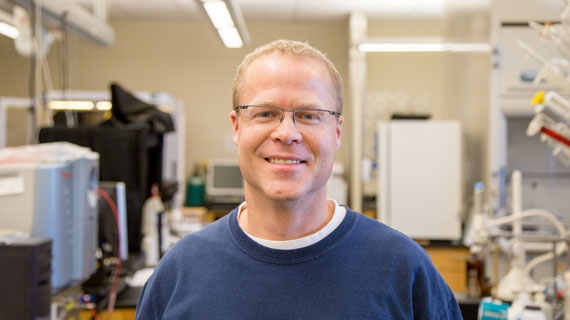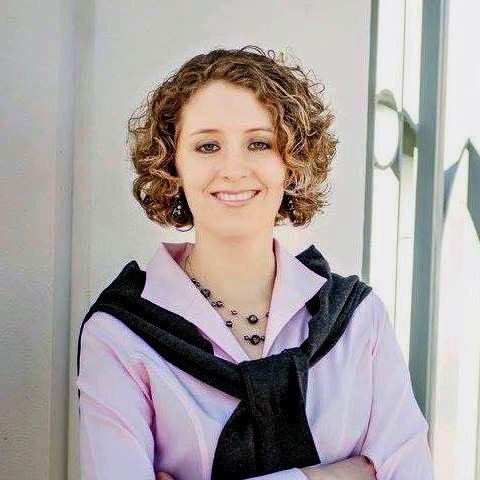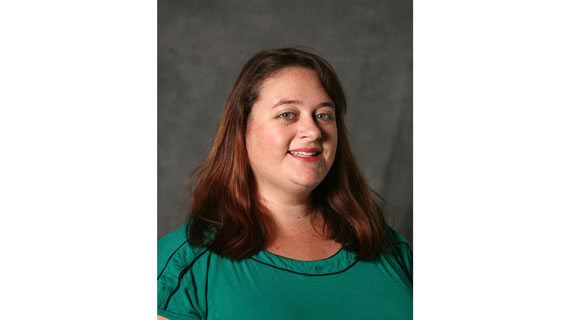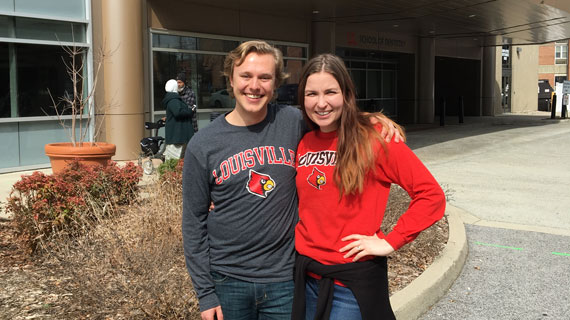Meet Our Professors: Bruce Howard, Chemistry
Posted: March 15, 2018 | Author: Lexi Carter | Read Time: 3 minutes
As an SUU alum, Dr. Bruce Howard shares his university pride and passion for chemistry daily with students. Teaching at SUU since 2002, Howard pushes students to think critically and develop analytical skills about chemistry, biology and the world around them.

Before attending college, Dr. Howard enlisted in the U.S. Naval Reserve. There he learned Russian and analyzed the Soviet military. Instead of pursuing a full time career with the Navy though, Dr. Howard began a biology major with plans to attend veterinary school. But taking chemistry and biology courses at Southern Utah University sparked his interest in organic chemistry and biochemistry. The molecular level of life was just too fascinating to resist, and he changed to a double major with plans for graduate study in molecular biology.
Howard graduated from SUU in 1993 with a B.A. degree in biology and chemistry, and a mathematics minor. He received his Ph.D. in chemistry at the Institute of Molecular Biology at the University of Oregon in 1999, and completed his postdoctoral study in the laboratory of Dr. Chris Hill in the Department of Biochemistry at the University of Utah School of Medicine.
As an SUU student, Howard studied living creatures and how they work at a molecular level. Now, as an SUU professor of chemistry he tries to pay it forward by helping his students appreciate the beauty and elegance of living organisms. “When students see what’s happening on a molecular level to allow living organisms function, it opens the door to their understanding of how medicine, nutrition and physiology work,” said Howard. “Chemistry provides a deeper appreciation of what living creatures are and how life on Earth works.”
At SUU Howard teaches the following classes:
- CHEM-4110 Biochemistry I
- CHEM-4120 Biochemistry II
- CHEM-1120 Elementary Bio-organic Chemistry
- CHEM-1125 Elementary Bio-organic Lab
- CHEM-4990 Chemical Literature and Seminar
- BIOL- 4620 Bioinformatics
Working with undergraduate students at SUU, he has solved the atomic structure of a malate synthase enzyme, a protein which they were able to purify from a microbe that grows in the Dead Sea. “One of my proudest moments as a professor was working with excellent students to understand how the atoms are connected within this protein, and how it folds together,” Howard said. “It’s this feeling of a victory after a long and arduous battle that makes research efforts worthwhile, and being able to provide this kind of experience for my students.”
Howard’s work has been published in a number of academic journals, primarily describing his work characterizing protein structures and their complexes using X-ray crystallography. This molecule-viewing technique helps him and his students study proteins. It allows them to determine their atomic structures to see what shape they are, and how they might function. It also allows them to see how the proteins are interacting with small molecules so they can design new molecules that may fit even better.
Currently they are working with an enzyme from M. tuberculosis that is required for it to live in human lung tissue. “If we can develop new compounds that stick in the active site of this protein, we can potentially block its function and kill the bacteria. This would represent a new class of antibiotics if we can get it right, and provide a new therapy for treating drug-resistant strains of TB which are on the rise.”
Outside of the classroom, Howard loves to spend time with his family and feels that living in southern Utah is one of the great benefits of working at SUU. He enjoys hiking, mountain biking and camping in this spectacular desert terrain and surrounding regions of the country. Or just curling up with a good book. He also likes to relax in nature with a drawing pad, camera, or a paintbrush.
Learn more about SUU's Chemistry Program here.
This article was published more than 3 years ago and might contain outdated information or broken links. As a result, its accuracy cannot be guaranteed.
Tags: Faculty




